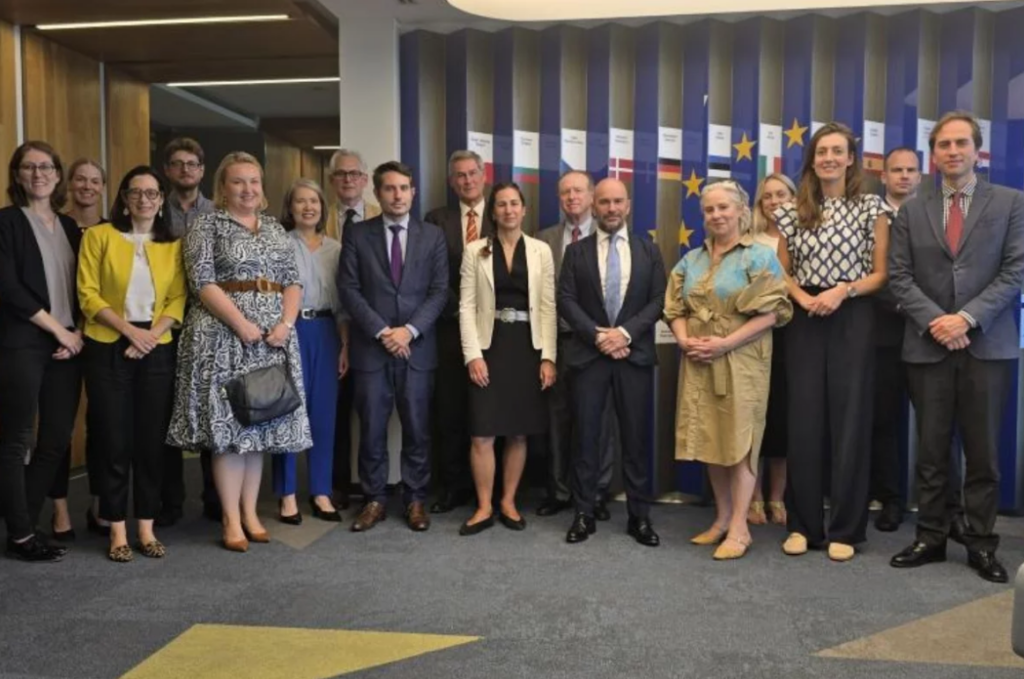Rafael Grossi, Director General of the International Atomic Energy Agency (IAEA), recently highlighted the Argentina’s potential to become a major player in green hydrogen production.
This vision is bolstered by the European Union’s (EU) commitment to allocate significant financial resources to support clean technology development in Argentina. However, while the opportunity is immense, the path to realizing this potential is fraught with technical, regulatory, and infrastructural challenges.
A recent report by the Economic Commission for Latin America and the Caribbean (ECLAC) estimates that Argentina’s green hydrogen market could contribute up to 20% of the country’s GDP by 2050. This projection underscores the transformative economic potential of the sector, particularly for a nation grappling with economic instability and seeking new avenues for growth. The EU’s interest in Argentina’s green hydrogen capabilities is strategic, as Europe aims to diversify its energy supply and accelerate its transition to renewable energy amidst global geopolitical uncertainties.
However, the economic promise of green hydrogen is contingent on overcoming significant barriers. One of the most pressing challenges is the high cost of production, driven largely by the inefficiency of current electrolyzer technologies. Electrolyzers, which split water into hydrogen and oxygen using renewable electricity, account for a substantial portion of green hydrogen production costs. In Argentina, research institutions like the National Institute of Industrial Technology are exploring innovative solutions, such as advanced materials, to improve electrolyzer efficiency and reduce costs. Yet, these advancements are still in the experimental phase, and their scalability remains uncertain.
The absence of a clear regulatory framework for green hydrogen production and use in Argentina poses a significant obstacle. According to the International Renewable Energy Agency (IRENA), the implementation of robust policies could unlock up to $8 billion in investments over the next decade. A well-defined regulatory environment is essential not only to attract foreign investment but also to foster the development of a globally competitive industry.
Currently, Argentina lacks specific regulations governing green hydrogen, creating uncertainty for investors and developers. This regulatory gap contrasts sharply with countries like Chile and Australia, which have established comprehensive hydrogen strategies and incentives. Without similar frameworks, Argentina risks falling behind in the global race to dominate the green hydrogen market.
Even if production costs are reduced and regulatory frameworks are established, Argentina faces another critical challenge: infrastructure. Less than 5% of the country’s energy infrastructure is currently equipped to integrate green hydrogen, highlighting a pressing need for modernization and expansion. Storage and transportation networks, in particular, are underdeveloped, posing a significant bottleneck for the sector.
Investments in infrastructure are essential to ensure that green hydrogen can be efficiently stored, transported, and integrated into the national energy matrix. Without these upgrades, the economic and environmental benefits of green hydrogen will remain unrealized. The EU’s financial support could play a pivotal role in addressing this gap, but the scale of investment required is substantial.
International Collaboration
The collaboration between Argentina, the EU, and private sector stakeholders is critical to overcoming these challenges. By leveraging international expertise and funding, Argentina can accelerate the development of its green hydrogen sector. This partnership not only strengthens Argentina’s energy security but also contributes to global efforts to reduce carbon emissions.
However, the success of this collaboration depends on Argentina’s ability to address its regulatory and infrastructural deficits. Without clear policies and significant investments in infrastructure, the country’s green hydrogen ambitions may remain unfulfilled.
Stay updated on the latest in energy! Follow us on LinkedIn, Facebook, and X for real-time news and insights. Don’t miss out on exclusive interviews and webinars—subscribe to our YouTube channel today! Join our community and be part of the conversation shaping the future of energy.





